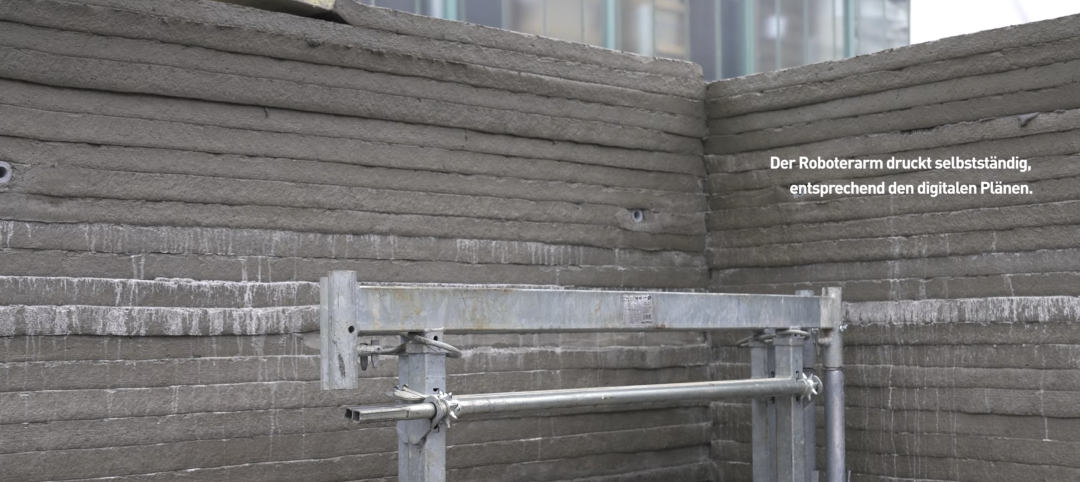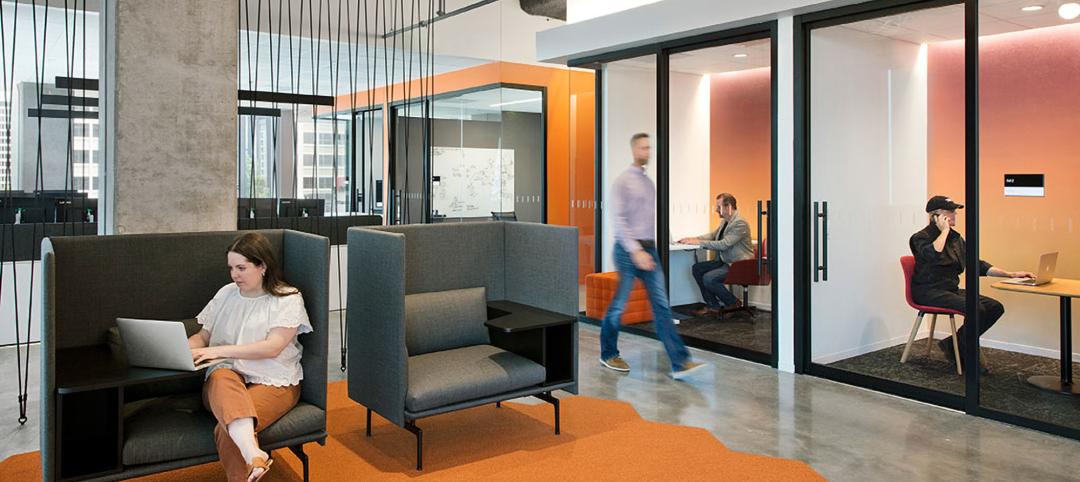Total construction to rise 5.1% in 2011
Spending for U.S. nonresidential building projects plunged nearly 23% in 2010, even as construction spending for heavy/engineering and residential projects dropped less than 2%. Nonresidential’s decline pushed total 2010 construction spending down 10%. The fourth consecutive annual decline brought the level of total construction spending to 30% below the pre-recession peak. Construction spending will be rising from the end of 2010 through 2011 and for several years beyond. The construction recovery comes an unusually long 18 months after recovery began in the overall economy and will be relatively slow.
Total U.S. construction spending will increase 5.1% in 2011. The gain from the end of 2010 to the end of 2011 will be 10%. The biggest annual gain in 2011 will be 10% for new residential construction, far above the 2-3% gains in all other construction sectors.
The delayed and slow construction recovery is due to both the subpar economic recovery and the unique restraints in the construction market, notably the collapse of the highway and housing finance systems (with no replacement in sight for either), a large surplus of residential space, and the weakened financial condition of developers and homebuyers.
Contractors and their suppliers will begin 2011 in a recession-cost environment. Labor is abundant, with annual wage gains still in the 0.0-1.0% range. Credit rates are extremely low but cautious loan approval standards exclude a relatively large share of loan applicants from the capital market. Costs are steady to slightly down for construction materials priced in the U.S. market, such as lumber and concrete, but erratically rising at a 5% or more annual pace for materials priced in international markets, such as metals, plastics, and energy. In order to get work contractors will still set their margins below the bottom of the usual range, and new projects will continue to draw far more than the usual number of bids.
The economic environment for contractors will improve in 2011. But it will continue to worsen early in the year for many types of public work and in the most depressed markets along the southern border and in the Rocky Mountain states. Some improvement will be clearly noticeable by the summer, with that pace accelerating late in the year. Credit rates will be rising but still very low by mid-year. The improved environment will firm materials pricing first before some contractors are able to raise bid prices. By the end of 2011, the materials price inflation trend will be back in the 5-6% annual increase range due to relatively stronger economic growth in the rest of the world as well as the 10% pickup in U.S. construction spending over the previous 12 months.
U.S. GDP growth will move from the 2% pace during most of 2010 to a 2.5-3.0% pace in 2011. This is unusually slow at the mid-point of an economic recovery: 4% or more is typical. Subpar economic growth has a magnified impact on all capital goods industries, including construction. Economic growth will be restrained by the lingering credit problems that began late in 2008 and investor and consumer uncertainty after the massive changes in operating rules made in Washington in the last two years. Note that the details of many of the changes are not yet known, and the results of the November election may revise or rescind some of the changes. Uncertainty always means caution and delayed spending. Beyond 2011, GDP growth will again be above 3.0%, permitting a quickening of the construction recovery.
Construction spending for nonresidential buildings will increase 3.0% in 2011 and 10% from the end of 2010 to the end of 2011. The gain will jump to well over 10% in 2012. For developer-financed projects the turnaround will be dramatic. Spending will rise 2% in 2011 after two years of 30% declines. This market will be expanding at a 15% annual pace by the end of 2011. The steep decline in project starts has already ended. Architects are already reporting rising design activity.
Spending for institutional buildings will rise 4.2% in 2011, mostly for nonprofit and private projects; spending on public buildings will not improve and may slip slightly under pressure from ebbing stimulus funds and cuts in state and local budgets after rainy day funds have been depleted. State taxes began rising in spring 2010 but remain 15% below the pre-recession level.
Housing starts will rise 24% in 2011 but only to about half of the underlying demographic demand trend. Nonetheless, this will generate the usual associated site and utility work as the development of new residential communities resumes, especially in the South and West. Note that new homes will be up to 10% smaller and on smaller lots than in pre-recession developments.
Heavy construction spending, as usually happens, slowed but did not decline while the overall economy was in recession. Then the usual drop in heavy construction activity early in the recovery period was unusually slim because of the massive amount of federal spending in the stimulus plan and a variety of smaller initiatives, such as Build America Bonds. Nominal dollar heavy construction spending is currently about the same as two years ago. Only a 5-6% gain in nominal dollar spending is expected in the next two years but rising project costs will account for more than all of this gain. The price of stimulus funding in 2009-10 is no growth in 2011-12 when federal emergency funding ebbs.
Three heavy sectors will see modest spending gains in 2011 while the remaining three will see no change or small declines. The strongest sectors will be water and sewer (+7.8%), highways and bridges (+6.7%), and communications (+3.7%). The water and sewer gain is due to delayed stimulus funding and the residential market improvement. The highway gain is due to bringing private funds into the market. The weak sectors will be power (-2.8%), conservation (-1.9%), and transportation facilities (+0.2%). Power always declines at this stage of the business cycle.
In spite of sluggish construction activity, domestic manufacturers of construction equipment have increased their sales nearly 60% in the last year. The added sales have been to rebuild rental fleets and supply the relatively strong manufacturing, utility, farming, mining and export markets. Production is still short of capacity so equipment prices are up only 1.1% in the last year. Ahead, the added demand for equipment use on job sites will modestly boost both equipment prices and rental rates by mid-2011. BD+C
Related Stories
MFPRO+ News | May 21, 2024
Massachusetts governor launches advocacy group to push for more housing
Massachusetts’ Gov. Maura Healey and Lt. Gov. Kim Driscoll have taken the unusual step of setting up a nonprofit to advocate for pro-housing efforts at the local level. One Commonwealth Inc., will work to provide political and financial support for local housing initiatives, a key pillar of the governor’s agenda.
Building Tech | May 21, 2024
In a world first, load-bearing concrete walls built with a 3D printer
A Germany-based construction engineering company says it has constructed the world’s first load-bearing concrete walls built with a 3D printer. Züblin built a new warehouse from a single 3D print for Strabag Baumaschinentechnik International in Stuttgart, Germany using a Putzmeister 3D printer.
MFPRO+ News | May 21, 2024
Baker Barrios Architects announces new leadership roles for multifamily, healthcare design
Baker Barrios Architects announced two new additions to its leadership: Chris Powers, RA, AIA, NCARB, EDAC, as Associate Principal and Director (Healthcare); and Mark Kluemper, AIA, NCARB, as Associate Principal and Technical Director (Multifamily).
MFPRO+ News | May 20, 2024
Florida condo market roiled by structural safety standards law
A Florida law enacted after the Surfside condo tower collapse is causing turmoil in the condominium market. The law, which requires buildings to meet certain structural safety standards, is forcing condo associations to assess hefty fees to make repairs on older properties. In some cases, the cost per unit runs into six figures.
Office Buildings | May 20, 2024
10 spaces that are no longer optional to create a great workplace
Amenities are no longer optional. The new role of the office is not only a place to get work done, but to provide a mix of work experiences for employees.
Mass Timber | May 17, 2024
Charlotte's new multifamily mid-rise will feature exposed mass timber
Construction recently kicked off for Oxbow, a multifamily community in Charlotte’s The Mill District. The $97.8 million project, consisting of 389 rental units and 14,300 sf of commercial space, sits on 4.3 acres that formerly housed four commercial buildings. The street-level retail is designed for boutiques, coffee shops, and other neighborhood services.
Construction Costs | May 16, 2024
New download: BD+C's May 2024 Market Intelligence Report
Building Design+Construction's monthly Market Intelligence Report offers a snapshot of the health of the U.S. building construction industry, including the commercial, multifamily, institutional, and industrial building sectors. This report tracks the latest metrics related to construction spending, demand for design services, contractor backlogs, and material price trends.
K-12 Schools | May 15, 2024
A new Alabama high school supports hands-on, collaborative, and diverse learning
In Gulf Shores, a city on Alabama’s Gulf Coast, a new $137 million high school broke ground in late April and is expected to open in the fall of 2026. Designed by DLR Group and Goodwyn Mills Cawood, the 287,000-sf Gulf Shores High School will offer cutting-edge facilities and hands-on learning opportunities.
Adaptive Reuse | May 15, 2024
Modular adaptive reuse of parking structure grants future flexibility
The shift away from excessive parking requirements aligns with a broader movement, encouraging development of more sustainable and affordable housing.
Affordable Housing | May 14, 2024
Brooklyn's colorful new affordable housing project includes retail, public spaces
A new affordable housing development located in the fastest growing section of Brooklyn, N.Y., where over half the population lives below the poverty line, transformed a long vacant lot into a community asset. The Van Sinderen Plaza project consists of a newly constructed pair of seven-story buildings totaling 193,665 sf, including 130 affordable units.

















